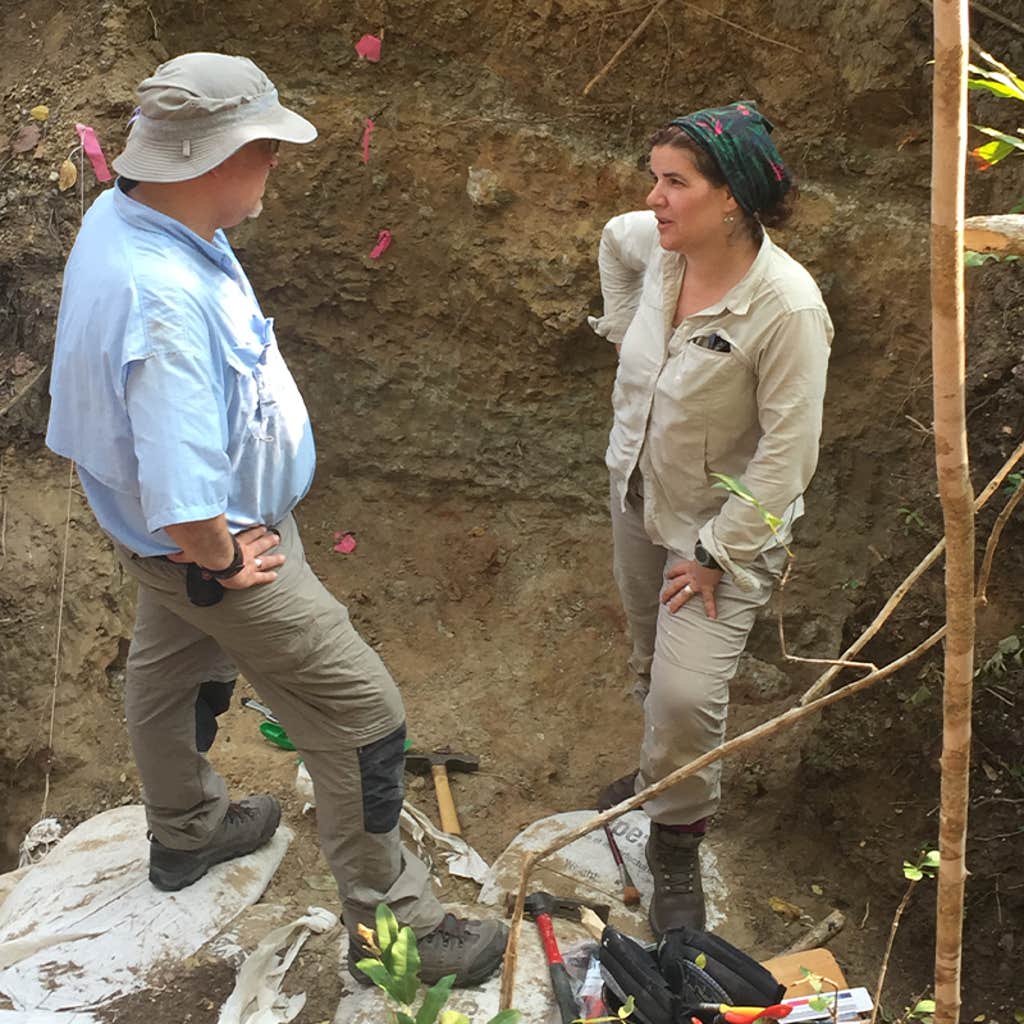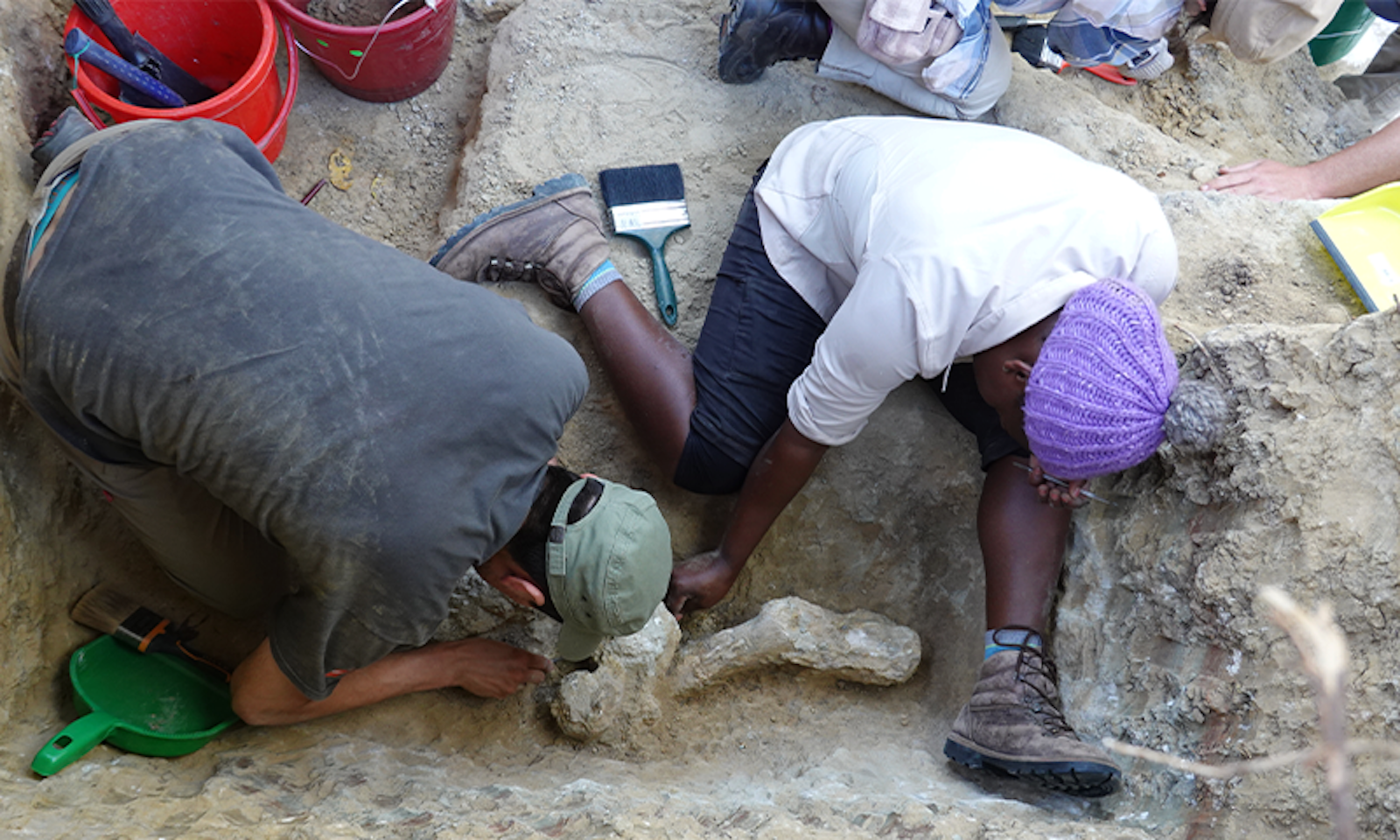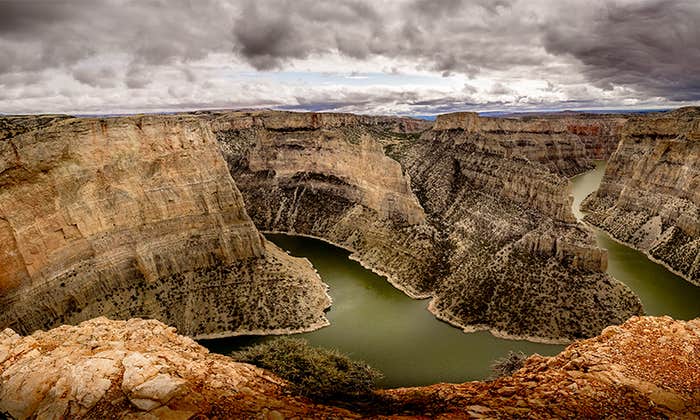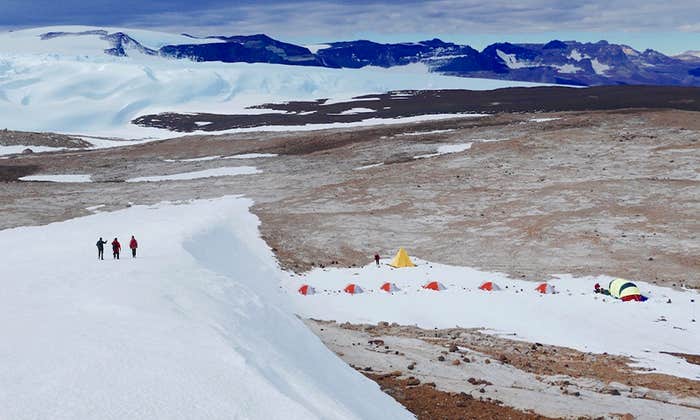
For the paleoanthropologists looking to fill out the pages of humanity’s family album, a cache of ancient teeth unearthed over the past few years at Gorongosa National Park in Mozambique could be like sepia-toned photos from the old neighborhood.
Yet the original owners of the teeth are far from human. In fact, the most startling specimens among them, discovered at an elevation of approximately 1,000 feet, come from the jaws of the genus Galeocerdo—tiger shark—an animal that doesn’t even live on land. Another set is from an ancient version of a hyrax, a distant, furry relative of elephants. Others are from the gargantuan Deinotherium—Greek for “terrible beast”—yet another relative of elephants, whose ancient tusks protruded from their lower jaws like great inverted question marks. A pair of incisors from an ape comes the closest to something in our evolutionary neighborhood, but they’re older than the light flickering from the Andromeda Galaxy and predate the emergence of our genus, Homo, by at least an epoch or so.
This mixed snapshot of past life found in a vein of sandstone and clay in the East African Rift System comes from the Miocene Epoch—a window of time stretching from about 23 million to 5 million years ago—that saw enormous development of vertebrates, particularly apes and other mammals.
The original owners of the teeth are far from human.
Yet like most things in paleontology, this trove is only a tiny fragment of a puzzle offered up piecemeal by the earth, at first glance disjointed and haphazard—the commas and consonants, perhaps, of a single stanza from a much, much longer verse.
To Susana Carvalho and her team at Gorongosa’s Paleo-Primate Project, these osteogenic antiquities mark the beginnings of a sweeping narrative involving the life, death, and the shifting landscapes of our cagey hominin ancestors, the creatures with which they shared the planet, and the environment in which they emerged.
“Even by looking at these other species that are not hominids, that are not apes, we’re also looking at the species that our ancestors evolved with and interacted with,” says René Bobe, the head paleontologist on the Gorongosa project.
Both Carvalho and Bobe joined me via Zoom—Carvalho from her office at Oxford University, and Bobe from the basement of the London Museum of Natural History, where he sat in front of a tall bank of metal drawers containing a few million years’ worth of fossils.

The project Carvalho has overseen at Gorongosa since 2015 incorporates the hardcore digging, sifting, and dusting of paleontology with training and mentoring for a cadre of Mozambiquan students who are pursuing graduate level studies in the field. Ravaged by a 16-year civil war that ended in 1992, Gorongosa has since undergone a profound revitalization that has seen its large animal populations rebound from near-decimation. Thirty years on from that conflict, the park is bursting with life and is home to as many as 6,300 different species of plants and animals. Carvalho’s team has uncovered a rich and strikingly comprehensive testament to what came before the current flora and fauna—and in the process is seeking to add another chapter to the story of humanity.
Within that chapter lies not so much an orderly family tree as a wildly branching bush with roots growing in a swirl from numerous directions. One key character among the thicket, Bobe tells me, is the elusive last common ancestor of chimpanzees and humans. But Bobe says that any study of our roots must push deeper into time than that—to a last common ancestor of humans and all other African apes, chimpanzees and gorillas included.
“There are various ideas about what these ancestors looked like, how they behaved, what they ate, and how they lived, but nobody knows for sure because these ancestors have yet to be found,” he says. “These ancestors mark the starting point of our lineage becoming different from other African primates. Our research aims not just to find these fossil species of apes but also to document the ecosystems that existed in Africa during a very important time in the evolution of humans and other mammals.”
In 2018, after a long period of surveys, Carvalho and Bobe began an excavation at the so-called Mazamba Formation, which lies on central Mozambique’s Cheringoma Plateau, a stretch of upland Miocene sandstone wedged between the Zambezi and Pungwe Rivers. Many were skeptical that such a damp, flood-prone area packed with vegetation would yield any useful fossil finds. But it did.
What local Armageddon befell the organisms on this rock?
As a common reliquary for ancient bones, sandstone, as the name suggests, forms when grains of sand are compacted together by the elements over the course of millennia.
When an organism that dies in such an environment is gradually interred, its soft tissue are dissolved and replaced by quartz, feldspar, and other minerals. Preserved in the resulting rock are the firmer remnants—bones, shells, teeth, wood tissues. And there they lie, subsumed by newer and newer strata of rock, each marking a new page on the calendar of geologic time.
The excavation site includes several open-air digs as well as studies of deep limestone caves whose layered sediments offer a sweeping record of specimens dating from a more recent time when our genus Homo had already emerged. Carvalho’s findings from the caves include a smattering of small silica tools chipped to a fine edge to cut open fruit or husk bark—evidence that some species of Homo dwelled here. All told, Carvalho says she and her colleagues exhumed some 2,500 discrete fossils across all the Gorongosa digs.
“This combination of animals is not found elsewhere in the East African Rift system,” says Bobe. “So, we’re looking at the evolution of an ecosystem that is new to science, and it’s very, very interesting.”

In London, Bobe rummages a jawbone out of one of his drawers at the museum and holds it up to his computer camera to show me—a hyrax specimen slightly larger than a human hand that was unearthed in Kenya in the 1950s by the legendary British-Kenyan paleoanthropologist Louis Leakey. It is similar, Bobe says, to the hyrax remains Carvalho and her team uncovered in Gorongosa.
Carvalho and Bobe’s hyrax specimen was found among what Carvalho described as a “bone bed”—a layer of fossils so plentiful that the species found within it must have died at the same time as the result of some catastrophic occurrence. Think Pompeii or the extinction of the dinosaurs.
What local Armageddon befell the organisms on this stratum of the Mazamba Formation remains unknown—Carvalho speculates that it could have been a recurring flood or other major storm—but it was the bone bed that proved Carvalho and Bobe were onto something.
On the basis of their finds at the Mazamba Formation, Carvalho and Bobe led a study for a paper published earlier this year asserting that the part of Gorongosa where their excavation is taking place was once coastal. The site now sits on dry land more than 50 miles due west of the Mozambique Strait—the waterline redrawn by ancient climatic shifts.
“This is the story of a coastal site, not an inland one, which has been the predominant focus of African paleoanthropology,” says Carvalho. “These are species that lived along the way between sea and land, and everything we are finding in Gorongosa is completely different from what you would find up north on the Rift or in the caves in South Africa—this area was an estuary.”
In this coastal forest, we’re going to find what we’ve been looking for.
The discovery of this liminal space between land and sea is an important one that has until now evaded paleontologists working in Africa, Carvalho tells me. An understanding of where ocean and land once met is critical to discerning the footprints of our primate forbears.
“It’s in this coastal forest that you are going to find what people have long been looking for but that no one has found yet,” Carvalho tells me. “Our hominin ancestors would have moved inland from here.”
Carvalho posits that during the twilight years of the Miocene, these ancestors might have followed riverbeds toward the interior of the continent, the humid rainforest vegetation along the way shepherding them toward new environments—and new adaptations.
The spectacular discoveries of Australopithecus skeletons in the 20th Century—which put East Africa on the map as humanity’s Garden of Eden—would seem to support this hypothesis, says Carvalho. Lucy, perhaps the most famous such specimen, was found in the savannas of Northeastern Ethiopia, part of the northerly reaches of the Rift, and well inland from the Red Sea.
At a mere 3.2 million years old, Lucy is much younger than the apes’ teeth that have turned up in Carvalho’s Miocene excavation. But, importantly, Lucy was a generalist omnivore, able to subsist on a variety of nutrients flourishing in her ancient environment. The hominins that would have been common during the Miocene had a more specialized diet and subsisted on soft fruits and other vegetation common along the water’s edge—a diet Bobe and Carvalho can analyze by examining patterns of wear on the ape’s teeth that they disinterred.
To both Carvalho and Bobe, there is a clear lineage among these earlier versions of ourselves. About 9 million years ago, the Earth became more arid, and the rainforests favored by Miocene primates began to shrink. It is around this time, says Bobe, that the last common ancestor of humans and chimpanzees was thought to live.
The chimpanzee ancestors—and their preference for ambulating with four limbs—remained within the moist forests that they still prefer today. Where in this historic relocation we emerged as a species remains, of course, the big unknown. At some point, we stepped into a more arid landscape as bipedal primates—but whether this happened when we reached the savanna or before is an intriguing question. There’s striking evidence suggesting that the apes from which our species of Homo eventually evolved were bipedal even before we left the trees.
So, what of these Last Common Ancestors, as the scientific literature calls them in capitalized terms, these theorized transitional species between us and the chimps we left in the forest?
In Carvalho and Bobe’s telling, they may well sit among the finds at the Mazamba Formation—all the more present for their absence. It’s a little like entering a house whose occupants have just left—here is a half-eaten apple, there an empty cup of coffee with a fresh brown ring at the bottom, the jackets on the rack by the door still astir.
Amid this hoard of fossils and bones from the Mazamba Formation, where will Carvalho and her colleagues find imprints of our shared precursors? “The stone tools might be able to tell us,” she says. “Because the hominins that used them could have left DNA samples in the sediments, and DNA preserves well in certain conditions like the limestone caves.”
It will be some time before Carvalho can have those sediments sequenced. But when she does, whose photo might she find? ![]()
Learn more about the team investigating human evolution in Gorongosa National Park below.
Photos and video courtesy of Gorongosa National Park
The Nautilus Gorongosa Series is published in partnership with the Howard Hughes Medical Institute’s Science and Educational Media Group.




























